
What is consciousness?
For millennia, scientists, philosophers and artists have searched for its origin and expression in our brains, in our hearts, and in the sky. No one has found it yet, and we still can’t say how it arises. Our own perceptual apparatus may in fact be blinding us to the source.
Maybe we’re looking in the wrong place. Maybe it’s something we share, but don’t exactly possess. Until the current era, research has almost always focused on the structures and functions of the brain, the senses and the nervous system in individuals. But in the long term, it is very likely that research into the dynamics of group interactions will prove to be just as important.
In the age of social media, and at the dawn of the era of virtual realities, brain- computer interfaces and artificial intelligence, our need to understand consciousness has acquired new urgency. The potential implications for society are profound, spanning culture, science, education, the environment and politics. The potential applications for commerce are unprecedented.
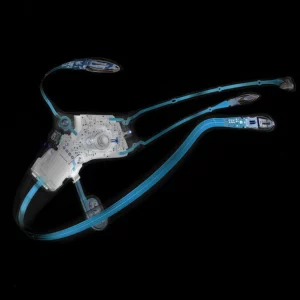
Mind activated technology is being developed
that can be used to stimulate flow states and control external devices. The usefulness is not limited to individuals. Equipment can potentially be controlled by groups of people acting collectively. Brain state changes initiated by consciousness-shifting techniques can drive media and operate many tools. These applications both depend on investigation of consciousness and enable it.
It’s not likely, however, to think that by simply putting on a headset we will be able to instantly control things with our thoughts. Practice is required to do anything well, whether you are playing pool or playing guitar. Eastern meditative traditions long ago pioneered effective methods to control and focus the mind. These techniques are remarkably relevant and useful today in designing the brain activated devices of the future.

Joy is contagious.
So are many other states of emotion and awareness. The changes that occur in the brain when people sing, dance or meditate in unison are the result of complex interactions between the limbic, endocrine and autonomic nervous systems, triggered by repetition and regulated by breathing.
The effects are amplified when these activities occur in a group setting. These physiological systems have electrical signatures, which can be monitored using sensors in headsets coupled with an array of filters. The resulting signals can be used to drive media or move objects. Most previous research has utilized fMRI technology, which is expensive, intrusive and unsuited for use with groups.
We propose to equip groups of 150-200 people with a new generation of sensors. Lightweight EEG headsets that read brainwaves and galvanic skin responses and wristbands that read the Autonomic Nervous System (ANS) can be connected by Bluetooth technology to smartphones. These sensors are non-intrusive and allow participants to move and behave normally. Groups can engage in ecstatic state shifting practices like chanting, drumming, dancing, yoga or meditation, and data can then be gathered from the changes that occur on both individual and collective levels.
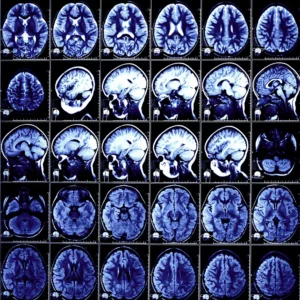
Brain states can be easily monitored with a graphic screen interface.
The collective capacity of 200 smart phones will allow researchers to record a tremendous amount of data. The individual outputs can also be mixed together to create a signal that reflects the collective shift in consciousness over time. This signal can drive changes in visual media such as lighting, or the rate of dissolve between images, creating a kind of biofeedback loop. The mirror effect of this could exponentially magnify the effect on the crowd. Applications resulting from this research could have significant market value.
Research: The Effect of Group Ritual on Brain Function

Research Objectives
The study we are proposing will be the first-ever evaluation of group ritual on brain function.
A growing number of brain imaging studies have examined individuals performing practices such as meditation, prayer and other spiritual practices. These studies have led to a deeper understanding of the neurophysiological effects of such practices. In addition, studies have also explored the cognitive, emotional, and experiential elements of the experiences.
Many spiritual traditions also invoke group practices, however, and far less data has been generated about this aspect. The Catholic mass, Sufi whirling, Yoruba ritual drumming and the Hindu mantra chanting practice known as Kirtan all derive part of their effect and meaning from being practiced in a group. During such group rituals, the individuals can have very powerful experiences that share many of the same features as the individual practices, but previous studies have never focused on how group dynamics influence limbic and endocrine system functions.
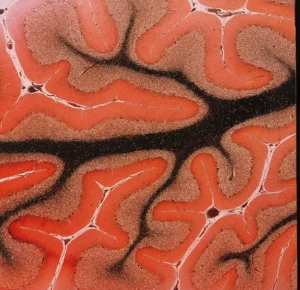
Spiritual practices elicit changes in the autonomic nervous system
that regulate heart rate and blood pressure, and data consistently supports this finding. The limbic structures and other parts of the brain are also involved.
In particular, areas that are associated with emotions, the sense of self and the sense of meaning all can be affected. Our prediction is that group rituals, such as large congregations of individuals singing or dancing, will activate many of these same areas. In addition, given the group context, we would expect that there would be a resonance or entrainment of the individual brains all performing the same ritual.
We propose to document this effect of group rituals on the brain. This data will help demonstrate the similarities and differences between group and individual rituals, and explore the hypothesis that consciousness has a component that is shared. It will also provide important information about the power and impact of group rituals in terms of affecting emotions, experiences, beliefs, and behaviors. This could have scientific, health, and spiritual implications.

AIM #1. To use quantitative EEG to evaluate concomitant changes in the brains of multiple individuals performing the same group ritual.
AIM #2. To determine if individual brains begin to resonate with each other during group rituals.
AIM #3. To determine if the subjective effects of the group ritual experience correlates with changes in brain function.
DELIVERABLES: We anticipate 2-3 peer reviewed research articles, accompanied by press releases from Thomas Jefferson University.
Introduction
 It has long been known that individual rituals such as meditation and prayer affect the brain in significant ways. EEG, fMRI, PET, and SPECT have all been used to evaluate the brain changes associated with individual practices. The results of these studies suggest a complex network of brain structures are involved including the frontal lobes related to concentration, the limbic system related to emotions, and the parietal lobe related to the sense of self. Depending on the practice, these structures, along with many others, demonstrate unique activity patterns that correlate with the subjective elements of the spiritual experience. Strong emotional reactions, in particular, are related to increased activity in the limbic system and the loss of the sense of self (i.e. self-transcendence) is associated with decreased activity in the parietal lobe.
It has long been known that individual rituals such as meditation and prayer affect the brain in significant ways. EEG, fMRI, PET, and SPECT have all been used to evaluate the brain changes associated with individual practices. The results of these studies suggest a complex network of brain structures are involved including the frontal lobes related to concentration, the limbic system related to emotions, and the parietal lobe related to the sense of self. Depending on the practice, these structures, along with many others, demonstrate unique activity patterns that correlate with the subjective elements of the spiritual experience. Strong emotional reactions, in particular, are related to increased activity in the limbic system and the loss of the sense of self (i.e. self-transcendence) is associated with decreased activity in the parietal lobe.
Specific electrical patterns are also witnessed in the brain during practices associated with the experience of relaxed attention. Rhythmic rituals such as meditation, prayer, or music, cause related changes in the rhythmic electrical patterns in the brain. While there is a significant literature base regarding individual practices, there are no studies that have explored the impact of group rituals on the brain. While we would expect group rituals to have significant effects on the brain, an important aspect would be to determine if there is a resonance of brains between individuals engaged in group ritual. Thus, we would expect the same areas to have the same activity patterns when people are engaged in the same ritual practice. In addition, we would expect that the subject elements of the experience of group ritual correlate with the brain changes.
The proposed study will utilize EEG measurements of multiple individuals engaged in the same group rituals of drumming, chanting, dancing and meditation. We will use a wireless EEG system so that we can monitor 150 individuals simultaneously while they participate in a group ritual.
Performance: Principles and Polarities
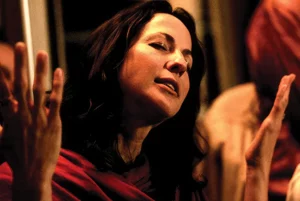
A shift in mental focus or the autonomic nervous system can trigger an electrical switch, and this current can change the polarity of crystals in a large panel array. A mirror becomes transparent, revealing an infinite space beyond. Amplified brain waves can drive ripples across a shallow pool, creating patterns and reflections. As the fluctuations of the mind diminish, the pool becomes still. Concentration and relaxation can bring a pattern into focus, change depth of field, or zoom through orders of magnitude, from microscopic to macroscopic. The originating state is the limited self. The resulting state is the unitary state.

The original state can be represented by a color, the resultant state by its opposite or compliment. The direction of light could slowly move, creating growing brightness or lengthening shadows. Opposing colors create the illusion of depth, setting up opposing states in the brain that won’t resolve. This creates a visceral feeling of suspension in depth, and in time. Link the color of a screen to attention and the sympathetic nervous system. Link the surrounding environment to relaxation and the parasympathetic nervous system. An orb or suspended screen could glow with inner light in proportion to the intensity of the signal it receives. A uniform surrounding field can radiate reflected light in proportion to the signal it receives.
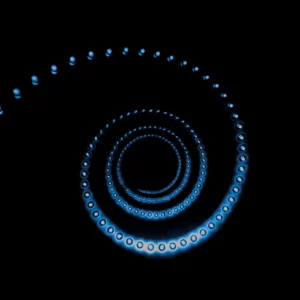
People crave experiences in which they are part of a large group focused on one point. Attentions are fully engaged without distraction, giving a strong sense of common connection and purpose. This is the benefit of ritual, and the persistent need at the source of why we create religion and art and sport.The visual content is purposefully non-representational. Pure consciousness, pure light, without cultural signifiers or metaphor, stripped of language and references. Silence transcends all beliefs, dogmas, philosophies and theories. Effective, meaningful ritual delivers participants to a unitary state. There is a simultaneous sense of ecstasy, clarity and serenity. It’s a state that is inherent in the brain, and the combined actions of regulated breathing, movement and music are particularly adept at establishing us there.
RESEARCH DIRECTOR
Andrew Newberg M.D.
Marcus Institute of Integrative Health / Thomas Jefferson University / Philadelphia, PA, USA / andrewnewberg.com
ARTISTIC DIRECTOR
Dave Stringer
Magnetic Melodies / Los Angeles, CA, USA
